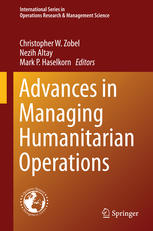

Most ebook files are in PDF format, so you can easily read them using various software such as Foxit Reader or directly on the Google Chrome browser.
Some ebook files are released by publishers in other formats such as .awz, .mobi, .epub, .fb2, etc. You may need to install specific software to read these formats on mobile/PC, such as Calibre.
Please read the tutorial at this link: https://ebookbell.com/faq
We offer FREE conversion to the popular formats you request; however, this may take some time. Therefore, right after payment, please email us, and we will try to provide the service as quickly as possible.
For some exceptional file formats or broken links (if any), please refrain from opening any disputes. Instead, email us first, and we will try to assist within a maximum of 6 hours.
EbookBell Team

0.0
0 reviewsThis volume provides a survey of current research problems and results in humanitarian operations research. Additionally, it discusses existing applications of humanitarian operations research, and considers new research efforts that clearly extend existing research and applications. The book is divided into three sections that provide an overview of the subject, a look at the theory, and an examination of applications.
The overview section presents chapters on modeling approaches and metrics to evaluate nonprofit operations; chief findings of fieldwork research in disaster response logistics; the use of cash as a form of relief; and measuring markets that supply cash-based humanitarian interventions.
The theory section includes chapters that examine the partner proliferation problem in disaster response networks; a case study of humanitarian logistics that examines how humanitarian culture informs change adoption; and a look at the current state of the art for information visibility in humanitarian operations.
Finally, the application section focuses on blood products, vaccines, and food assistance, with individual chapters on efficient inventorying and distribution of blood products during disasters; a detailed look at modeling in the context of the vaccine supply chain; a framework for achieving equity, effectiveness, and efficiency in food bank operations; and a spatio-temporal vulnerabili
ty assessment of the resilience of a population affected by sudden lack of food.